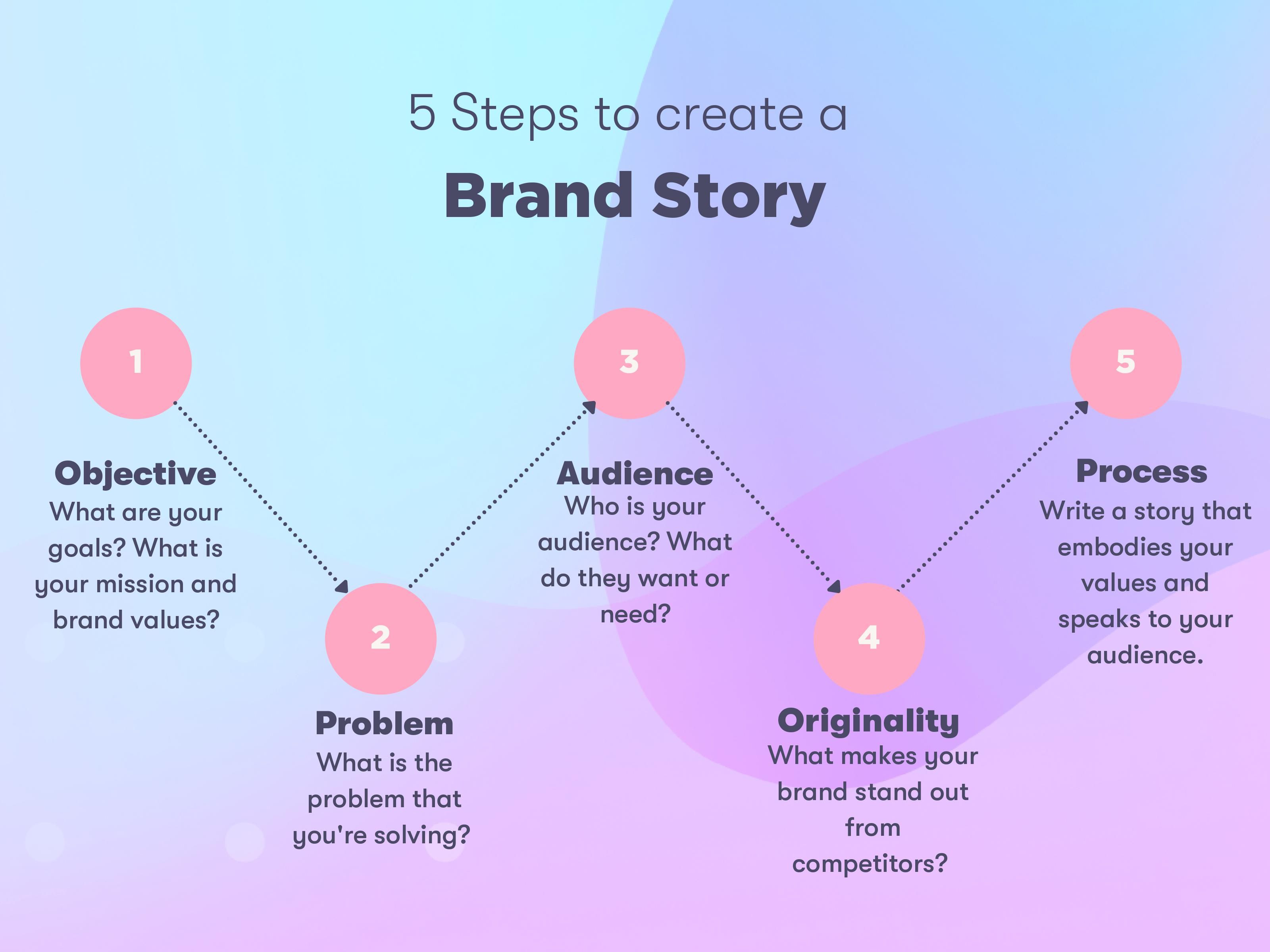Craft Your Brand Story Like a Modern Shakespeare

Once upon a time, there was a brand story
Brand storytelling is more than writing a narrative around how a company came to be and how it makes a profit. It’s about capturing people's attention and establishing personal bonds with your target audience.
If you’re wondering how to craft a brand story that sticks in people’s minds, this article is for you.
What is brand storytelling?
Brand storytelling uses a narrative approach to communicate your brand to an intended audience. It gives your business a chance to convey its values and brand style without seeming overly marketing oriented. Brand storytelling is valuable because it helps you stand out from the crowd by developing a unique voice and invoking emotion associated with your product or service.
What is a brand story?
A brand story is exactly what it sounds like; it’s the story of your brand! It could include personal reports, facts, and a testimony of what has brought your business together to this point.
What is the difference between a brand story and brand storytelling?
A brand story focuses on the story of your brand’s history, whereas storytelling brings certain brand elements or characteristics to life through storytelling mechanisms. Storytelling is used at all levels of your marketing plan and can even be used within your brand story.
Creating a brand story in 5 steps
The efficaciousness of storytelling is no secret; marketers have already utilized the power of stories in content plans and campaigns. Science, however, is taking stories to a whole new level, discovering how they change attitudes, beliefs, and behaviors.
When you listen to a story, cortisol, dopamine, and oxytocin are released in the brain. If you’re trying to make a memorable point, cortisol helps form memories through association. Dopamine, which helps to regulate emotions, keeps the audience engaged. And oxytocin is related to empathy, creating a deeper connection and deepening good relationships.
These findings are essential to marketing teams because human-based and emotional stories instill a better understanding of a speaker's main point. Why should they care about your product or service? What will it do for them, and how will it make their lives easier?
So how do you write your own brand story?

#1 Create a killer opener with a mission
To create a narrative that embodies the spirit of your brand, you’ll need to deeply understand the building blocks that make up you ✨ - who you are, what you care about, and why it matters.
First, you should clearly define your business mission. All communication with your audience will be based on this statement and how you pursue its values. Next is finding what makes your brand unique and stand out from competitors in the marketplace. In doing so, you can better add storytelling elements to your brand story. Here are some questions to help you out:
Mission and values
- What motivated you to get started?
- Who is your ideal customer? What demographics do they have?
- What pain points does your product or service solve?
- Who is your competition? What do they do well, and what do you do better?
Your brand story is an opportunity to humanize your brand by finding connections through shared emotions and experiences. Make sure your mission statement and brand reflect this!
#2 Introduce a crisis that builds tension
An element of a good story is the predicament. It’s the unexpected plot twist or the challenge that needs to be solved. Your brand should express its values and mission while going through this conflict. This conflict doesn’t necessarily mean something negative. Instead, it’s the motivation for creating your brand.
In your brand story, don’t be afraid to talk about your challenges and flaws, as well as how you’ve defeated them.
- How did you get from point A to point B?
- What obstacles have you faced? How have they affected your philosophy and values as a company?
- What do you struggle with? What flaws do you see in the industry, and how have they influenced you?
- How can these experiences help you connect with your audience in your brand story? Are they relatable and pragmatic?
#3 Get creative with complex characters
Many stories have a heroine - think of Wonder Women, Hermione, Katniss Everdeen - and a villain with opposing motivations. Your brand story can have multiple characters, your customer, brand, and adversary. The adversary could be a competitor, or it could be the problem that your product or service solves. By battling against the villain, the heroine can overcome her flaws and ultimately resolve the story’s conflict.
Just like any traditional heroine in a fairytale, your brand should have a set of skills and passions driving it towards its overarching goal. This could also be considered your brand’s personality and voice.
What are your character characteristics:
- Humorous and joyful
- Honestly and a big heart
- Rebellious and outside the box
- Down to earth and relaxed
- Caring and giving
- Intelligent and sophisticated
- Brave and stubborn
- Hot-blooded and defiant
Sometimes it’s hard to choose just one, and there are many more adjectives that could be put on the list. What’s important is that you select characteristics that would help your brand eventually achieve its mission and value statements.
💡Fun fact: Similar to how stories prompt chemical reactions in our brains, well-crafted characters also trigger mirror neurons. Essentially, these mirror neutrons allow us to put ourselves into somebody else’s shoes, making it easy to have a similar emotional state in our brain. So when you have emotionally rich characters in your brand story, it helps you form a connection with your audience.
#4 Know your sidekick
Sometimes when we’re telling an incredible brand story, it’s easy to lose track of what’s important - the audience. Remember that your hero is the customer, and the sidekick is your brand. Your customer is Xena, the warrior princess, and your brand is Gabrielle.
#5 Switch things up for suspense
There always seems to be the right way to do things in marketing. As scary as it seems to break away from what works from your competitors, don’t be afraid to be authentic. The market is noisy, and a brand's unoriginality doesn’t fool customers. Be strange, quirky, and original. It could work wonders for your marketing strategy and your brand.
Brand story examples
Two brands come to mind when we think of “storytelling marketing” or “best brand stories,” Warby Parker and Fjallraven.
Warby Parker
Brand story overview: Glasses should be affordable
Warby Parker is an affordable eyewear retailer. In their brand story, the founder accounts a time when he lost his glasses on a backpacking trip but couldn’t afford new ones as a graduate student. Looking into his options, he realized that the glasses industry is primarily run by one company, leading to a monopoly in the market. Warby Parker saw a problem: glasses are too expensive and created a solution to help others in a similar position. This rebellious spirit, paired with the desire to help others, creates a brand story that most customers can relate to and appreciate.
Fjallraven
Brand story overview: Comfortably spend time in nature
Starting in a garage in the Swedish High Coast, Fjallraven was born. In 1960, Åke Nordin constructed his first aluminum-framed backpack that made being outdoors a lot easier. Later he began to tackle the common camping problems: condensation in tents, wet clothing, and even poor back posture. Fjallraven tackled the issue of inadequate outdoor gear so people could enjoy the outdoors. The brand story not only knows its voice, but it clearly communicates its messages throughout.
And they lived on happily ever after
Your brand story doesn’t end when you launch a business. As your brand grows and establishes itself in the marketplace, your customers will become a part of your story. Now it’s your turn to show how your customers and brand will continue that adventure together.
